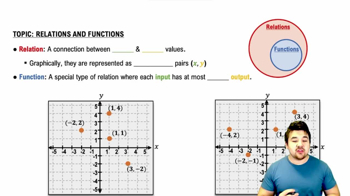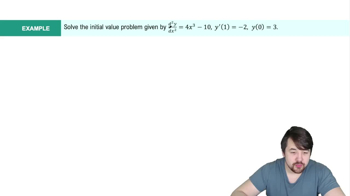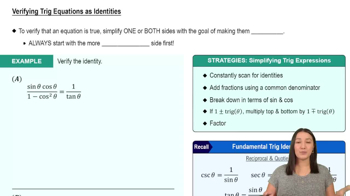A customer has asked you to design an open-top rectangular stainless steel vat. It is to have a square base and a volume of 32 ft³ , to be welded from quarter-inch plate, and to weigh no more than necessary. What dimensions do you recommend?
Table of contents
- 0. Functions7h 54m
- Introduction to Functions16m
- Piecewise Functions10m
- Properties of Functions9m
- Common Functions1h 8m
- Transformations5m
- Combining Functions27m
- Exponent rules32m
- Exponential Functions28m
- Logarithmic Functions24m
- Properties of Logarithms36m
- Exponential & Logarithmic Equations35m
- Introduction to Trigonometric Functions38m
- Graphs of Trigonometric Functions44m
- Trigonometric Identities47m
- Inverse Trigonometric Functions48m
- 1. Limits and Continuity2h 2m
- 2. Intro to Derivatives1h 33m
- 3. Techniques of Differentiation3h 18m
- 4. Applications of Derivatives2h 38m
- 5. Graphical Applications of Derivatives6h 2m
- 6. Derivatives of Inverse, Exponential, & Logarithmic Functions2h 37m
- 7. Antiderivatives & Indefinite Integrals1h 26m
- 8. Definite Integrals4h 44m
- 9. Graphical Applications of Integrals2h 27m
- 10. Physics Applications of Integrals 3h 16m
- 11. Integrals of Inverse, Exponential, & Logarithmic Functions2h 31m
- 12. Techniques of Integration7h 41m
- 13. Intro to Differential Equations2h 55m
- 14. Sequences & Series5h 36m
- 15. Power Series2h 19m
- 16. Parametric Equations & Polar Coordinates7h 58m
5. Graphical Applications of Derivatives
Applied Optimization
Problem 68b
Textbook Question
Particle motion The positions of two particles on the s-axis are s₁ = cos t and s₂ = cos (t + π/4) .
b. When do the particles collide?
 Verified step by step guidance
Verified step by step guidance1
To find when the particles collide, we need to determine when their positions are equal. Set the position functions equal to each other: \( \cos t = \cos (t + \frac{\pi}{4}) \).
Recall the trigonometric identity for cosine: \( \cos A = \cos B \) implies \( A = 2n\pi \pm B \) for integer \( n \). Apply this identity to the equation \( \cos t = \cos (t + \frac{\pi}{4}) \).
This gives us two possible equations: \( t = 2n\pi + (t + \frac{\pi}{4}) \) and \( t = 2n\pi - (t + \frac{\pi}{4}) \).
Solve each equation for \( t \). For the first equation, simplify to find \( 0 = 2n\pi + \frac{\pi}{4} \), which is not possible. For the second equation, simplify to find \( 2t = 2n\pi - \frac{\pi}{4} \).
Solve the second equation for \( t \) to find the specific times when the particles collide. This will give you the values of \( t \) in terms of \( n \).
 Verified video answer for a similar problem:
Verified video answer for a similar problem:This video solution was recommended by our tutors as helpful for the problem above
Video duration:
4mPlay a video:
Was this helpful?
Key Concepts
Here are the essential concepts you must grasp in order to answer the question correctly.
Particle Position Functions
In this context, the positions of the two particles are given by the functions s₁ = cos(t) and s₂ = cos(t + π/4). These functions describe how the position of each particle changes over time, with 't' representing time. Understanding these functions is crucial for determining when the particles are at the same position, which is essential for solving the collision problem.
Recommended video:

Relations and Functions
Collision Condition
For two particles to collide, their positions must be equal at the same time. This means we need to set the position functions equal to each other: cos(t) = cos(t + π/4). Solving this equation will yield the values of 't' at which the particles occupy the same position on the s-axis, indicating a collision.
Recommended video:

Initial Value Problems Example 1
Trigonometric Identities
Trigonometric identities, such as the cosine addition formula, are essential for simplifying and solving equations involving trigonometric functions. In this case, using the identity cos(a + b) = cos(a)cos(b) - sin(a)sin(b) can help in transforming the collision condition into a more manageable form, allowing for the determination of the specific times 't' when the particles collide.
Recommended video:

Verifying Trig Equations as Identities

 1:13m
1:13mWatch next
Master Intro to Applied Optimization: Maximizing Area with a bite sized video explanation from Patrick
Start learningRelated Videos
Related Practice
Textbook Question
